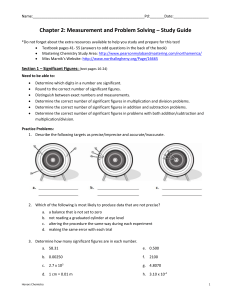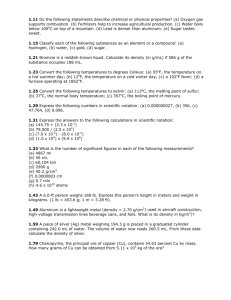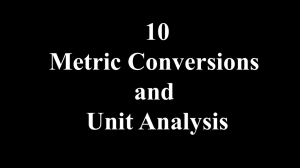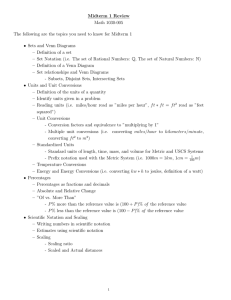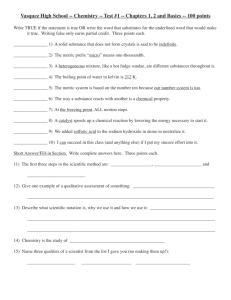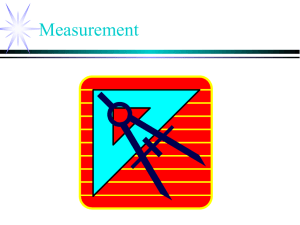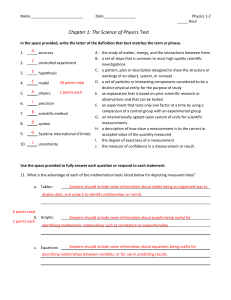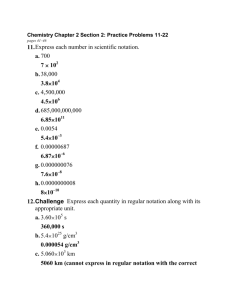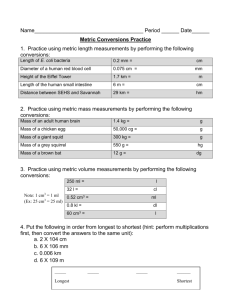Handout to Accompany Our Class-work
advertisement
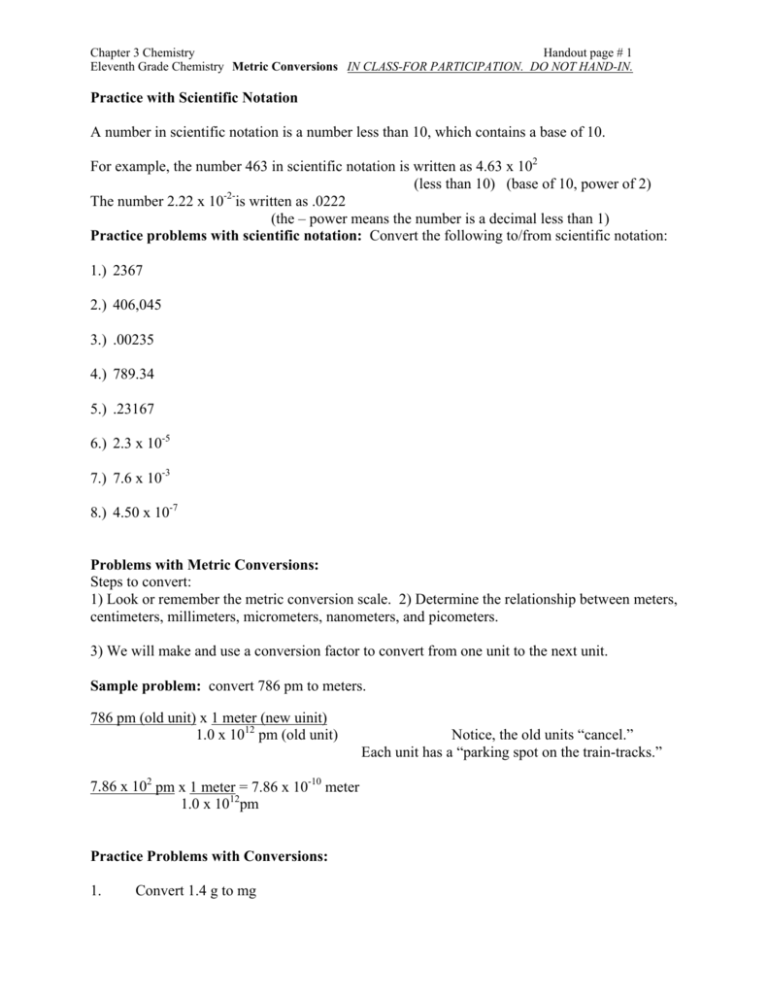
Chapter 3 Chemistry Handout page # 1 Eleventh Grade Chemistry Metric Conversions IN CLASS-FOR PARTICIPATION. DO NOT HAND-IN. Practice with Scientific Notation A number in scientific notation is a number less than 10, which contains a base of 10. For example, the number 463 in scientific notation is written as 4.63 x 102 (less than 10) (base of 10, power of 2) -2The number 2.22 x 10 is written as .0222 (the – power means the number is a decimal less than 1) Practice problems with scientific notation: Convert the following to/from scientific notation: 1.) 2367 2.) 406,045 3.) .00235 4.) 789.34 5.) .23167 6.) 2.3 x 10-5 7.) 7.6 x 10-3 8.) 4.50 x 10-7 Problems with Metric Conversions: Steps to convert: 1) Look or remember the metric conversion scale. 2) Determine the relationship between meters, centimeters, millimeters, micrometers, nanometers, and picometers. 3) We will make and use a conversion factor to convert from one unit to the next unit. Sample problem: convert 786 pm to meters. 786 pm (old unit) x 1 meter (new uinit) 1.0 x 1012 pm (old unit) 7.86 x 102 pm x 1 meter = 7.86 x 10-10 meter 1.0 x 1012pm Practice Problems with Conversions: 1. Convert 1.4 g to mg Notice, the old units “cancel.” Each unit has a “parking spot on the train-tracks.” Chapter 3 Chemistry Handout page # 2 2. Convert 1.4 mg to g 3. Convert 1.2 cm to micrometers 4. Convert .377 m to mm 5. Convert .044 kM to m 6. Convert 94.5 g to micrograms 7. Convert 4.6 mg to g Temperature Conversions: The conversion formulas are as follows: F = 1.8 C + 32 C = F – 32 1.8 You must memorize the next two formulas: K = C + 273 1. Convert 45°F to °C. 2. Convert 32.2°C to F. 3. Convert 45°C to K. 4. Convert 96.6°C to K. 5. Convert 33°F to K. C = K – 273 Chapter 3 Chemistry Handout page # 3 Problems concerning Density. D (density) = M (Mass) V (Volume) This formula can be rearranged to solve for any of the 3 variables. M = _______ V = _______ (Your job: rearrange for these variables.) Once we understand what variable we are looking for within the formula above (we have to memorize the formula for density), we will be able to use this equation to solve for any unknown density, mass or volume, providing we know 2 of the 3 units. Concept question: What units is density measured in? 1.) What is the density of a rock having a mass of 100 g and a volume of 5.2 cm3 ? 2,) What is the mass of a rock having a density of 2.65 g/cm3 and a volume of 11.18 cm3 ? 2.) What is the volume of a rock with a density of .86 g/cm3 and a mass of 22 grams?

